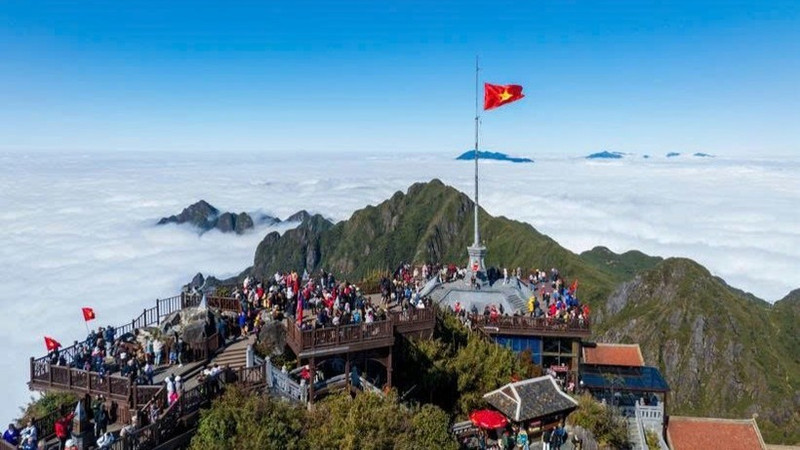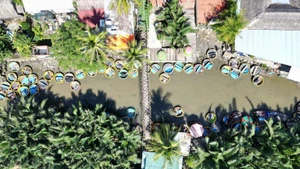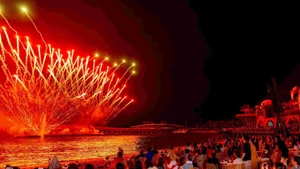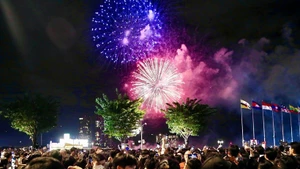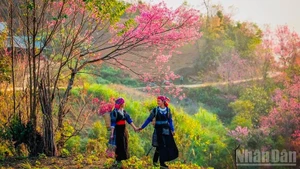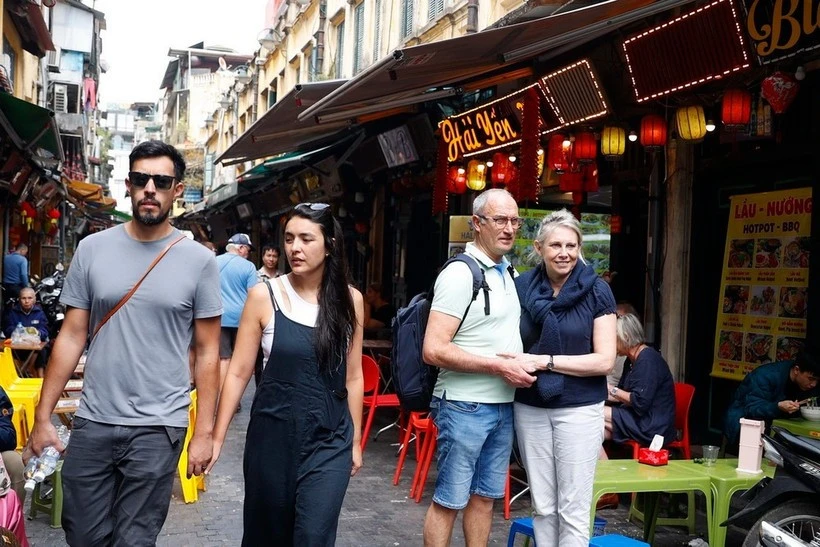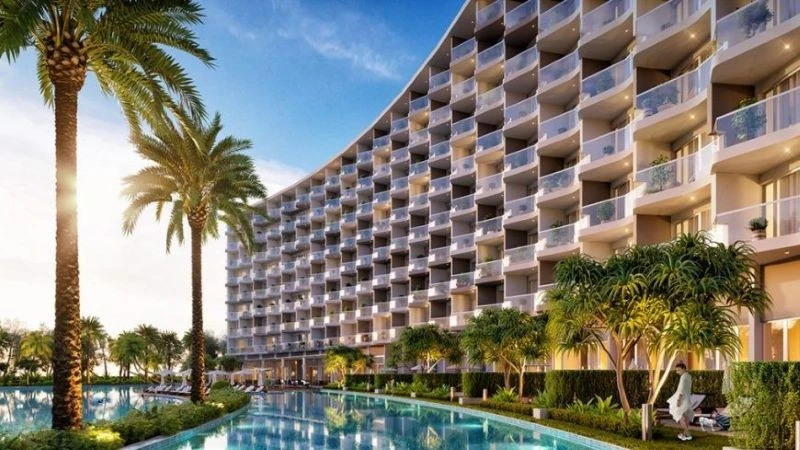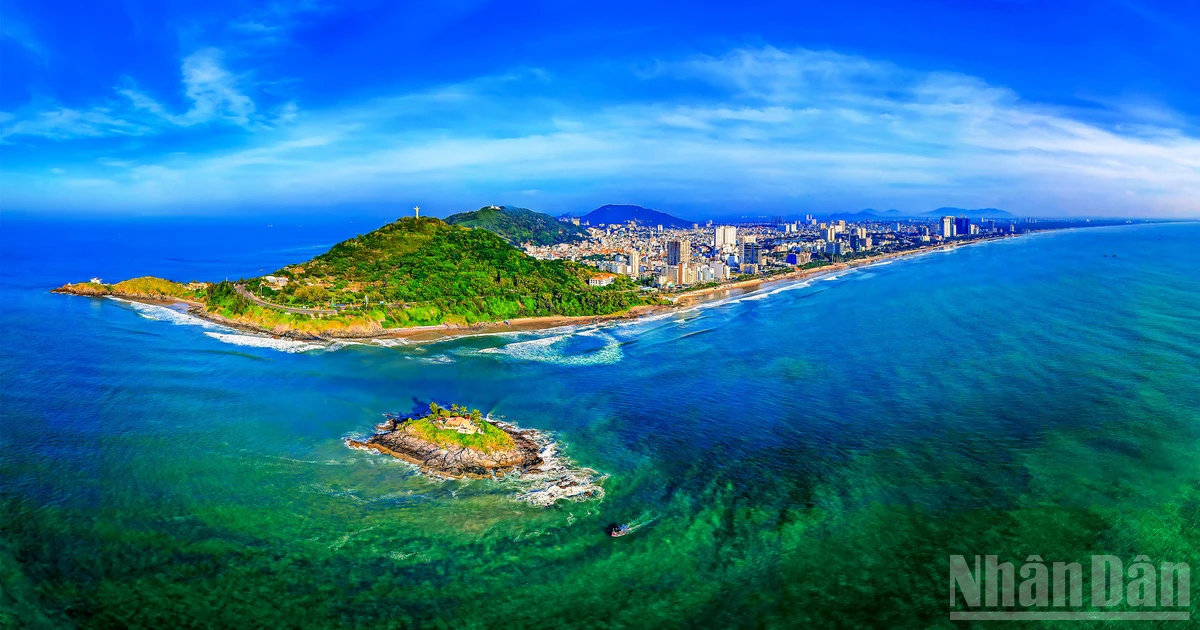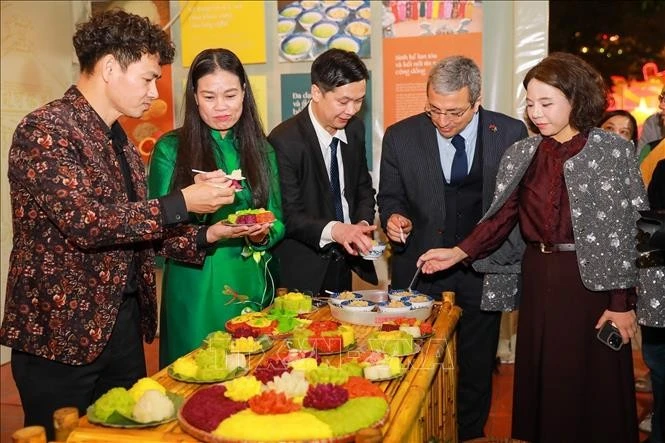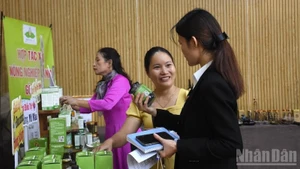Diverse tourism products
In Mu Cang Chai Commune, the western part of Lao Cai Province, visitors will be amazed to see the "Stairway to Heaven" in the middle of the green forest. Arriving at the Nature Homestay community tourism site owned by Thao A Chua, we were impressed by the unique tourism model here.
“Foreign tourists are very enthusiastic about staying here for long days and joining in activities during the water-pouring season. They plough and plant rice on the terraced fields with local residents, catch fish and black chickens, and help prepare meals in the H’Mong style,” Thao A Chua shared.
Graduated from the agroforestry faculty of Thai Nguyen University, Chua took out a bank loan to build stilt houses, plant flowers, and collaborate with tourism tours and other H’Mong households in Pung Luong Hamlet to develop community-based tourism. Thanks to his hard work and willingness to listen to visitors’ feedback, Chua’s homestay has been improved, now generating over 150 million VND in annual income.
At Thac Ba Lake in Yen Binh Commune, home to more than 1,300 small islands, tourists flock to scenic grape hills cultivated on these islands.
Ta Huu Tinh, owner of a grape island in Khe Gay Village, Yen Binh Commune, shared that three years ago, after learning experiences from grape farms on the outskirts of Ha Noi, he began developing an agritourism farm specialising in small-seed and Shine Muscat grapes.
By applying advanced techniques such as greenhouses, automated irrigation, and precise flower pollination management, this season Tinh harvested about one tonne of grapes. With a selling price of 150,000 VND/kg, in combination with income from tourist visiting and experiencing grape harvest, his family now enjoys a comfortable life.
Nearby, Dinh Dai Thanh’s grape island, with 6,000 Shine Muscat grape vines, also draws many tourists. Visitors to Thac Ba Lake not only enjoy vineyard experiences but also enjoy local specialties like grilled hemibagrus fish with galangal, crispy fried oil fish, and dried barbel chub - all caught from Thac Ba Lake.
Located in Viet Nam’s northern mountains, Sa Pa has long been a unique destination with its majestic mountain ranges, ethnic minority traditional cultures, and some European-style architectural works. Some travellers consider it as the “Switzerland of Viet Nam.”
Sa Pa’s unique scenery has increasingly attracted foreign tourists. According to Hana Tour, a tourism agent of the Republic of Korea (RoK), the number of bookings for package tours to Sa Pa surged by 333% in the first half of 2025 compared to the same period in 2024.
Inter Bus Lines, a reputable passenger transport brand on the Ha Noi–Sa Pa and northern tourist routes, has launched attractive promotions this summer for families wanting to explore misty, colourful Sa Pa. Meanwhile, Sun Group is offering various summer promotions for only Vietnamese tourists, including buffet dinners at luxury restaurants Van Sam or Hoa Hong for tourists buying Fansipan cable car tickets after 1 p.m., The promotion programme also extends the journey to explore Fansipan from late afternoon into sunset.
Rapid but sustainable development
The northwest is known for its majestic landscapes, unique terraced fields, misty hamlets, and ethnic communities with diverse cultural identities. Lao Cai and its former neighbour Yen Bai — now merged — are joining hands to build a high-potential “linked tourism belt.”
According to Nong Viet Yen, Director of Lao Cai Provincial Department of Culture, Sports and Tourism, the merger of Yen Bai and Lao Cai into a new province is a major strategic policy to create a new growth pole for the northern midlands and mountainous region. For the tourism sector, it marks a critical turning point, opening many opportunities but also posing numerous challenges that must be recognised and addressed synchronously.
Lao Cai now boasts many attractive destinations, from Fansipan Peak to Thac Ba Lake - a series of highlighted destinations including Sa Pa, Bac Ha, Mu Cang Chai, Suoi Giang, and Muong Lo with breathtaking scenery, distinctive cultural identities, and favourable climates. The implementation of the master plan on tourism system for 2021-2030, vision to 2045 according to Decision No. 509/QD-TTg, and the goals set for 2025–2030 will provide a legal framework and clear direction.
Based on that foundation, the tourism sector has proposed breakthrough solutions for the 2025–2030 period, aiming to develop Lao Cai into the “Dynamic tourism centre of the northern mountainous region,” associated with the strategy of “Red River Prosperity Axis”, and establish a high-quality tourism cluster Sa Pa–Bac Ha–Nghia Lo–Mu Cang Chai–Suoi Giang.
After the merger, the new province has significant advantages in attracting investment and developing synchronised tourism infrastructure. With a larger socio-economic scale and increased population and budget, it will enhance its capacity to mobilise investment resources.
Notably, the transportation system will continue to expand: the Noi Bai–Lao Cai expressway, the Nghia Lo–Tram Tau–Sa Pa expressway in near future, Sa Pa Airport, and Thac Ba Lake waterways will help the tourism sector to access broader markets. These are ideal conditions for developing typical tourism products associated with international tourism.
Lao Cai Province has favourable conditions to become a tourism hub of the northern mountainous midland region, participate more deeply in international tourism chains via the Lao Cai International Border Gate, and develop products associated with the Chinese and ASEAN markets.
With combined strengths, the province aims to welcome around 16.5 million visitors by 2030, making tourism a spearhead economic sector, significantly contributing to provincial GRDP growth.
However, according to Nong Viet Yen, along with these opportunities, the tourism sector will face numerous challenges. One of the greatest challenges is how to balance rapid development with sustainable development. Without comprehensive planning and effective management mechanisms, the tourism sector could face the risk of overloading, damaging landscapes, ecosystems, and indigenous cultures — the core values the province are striving to preserve.
Moreover, the two former provinces had different strengths. Former Lao Cai focused on international, high-end resorts and Sa Pa tourist urban area, and former Yen Bai Province strongly developed eco-tourism, community tourism associated with indigenous culture. Therefore, it is essential to harmonise development orientations, functional zoning, and ensure balanced growth. This requires a synchronous and scientific approach with a clear roadmap.
In addition, it is important to improve human resource quality and industry management capacity. As the area and scale are expanded and the number of visitors surges, pressures on workforce training, digital transformation, and the apparatus of tourism promotion and advertisement organisation will also grow. If Lao Cai tourism sector, localities and tourism businesses do not have a systematic plan in training, selecting and using the human resource, the province’s tourism growth will lack sustainability.
